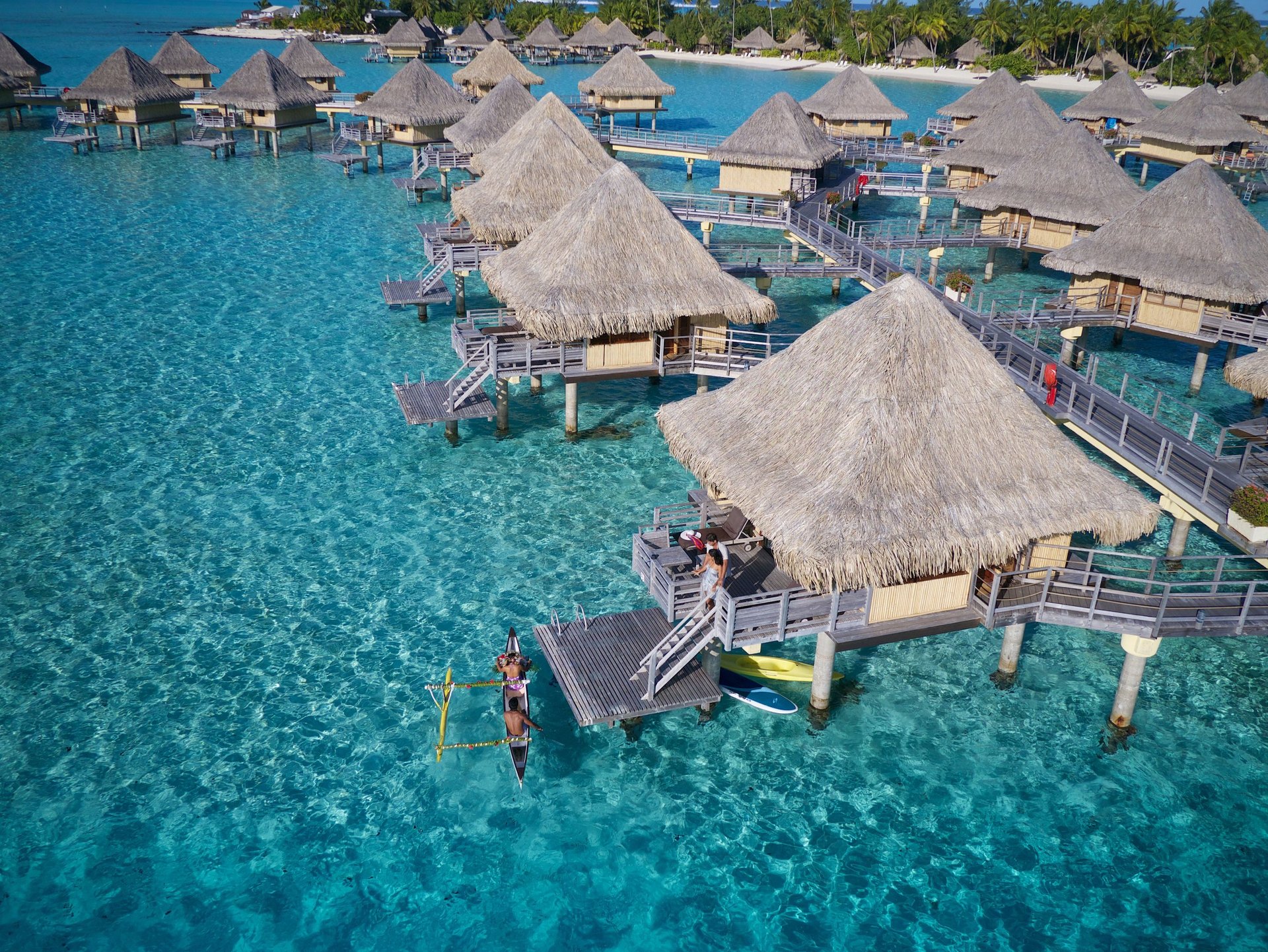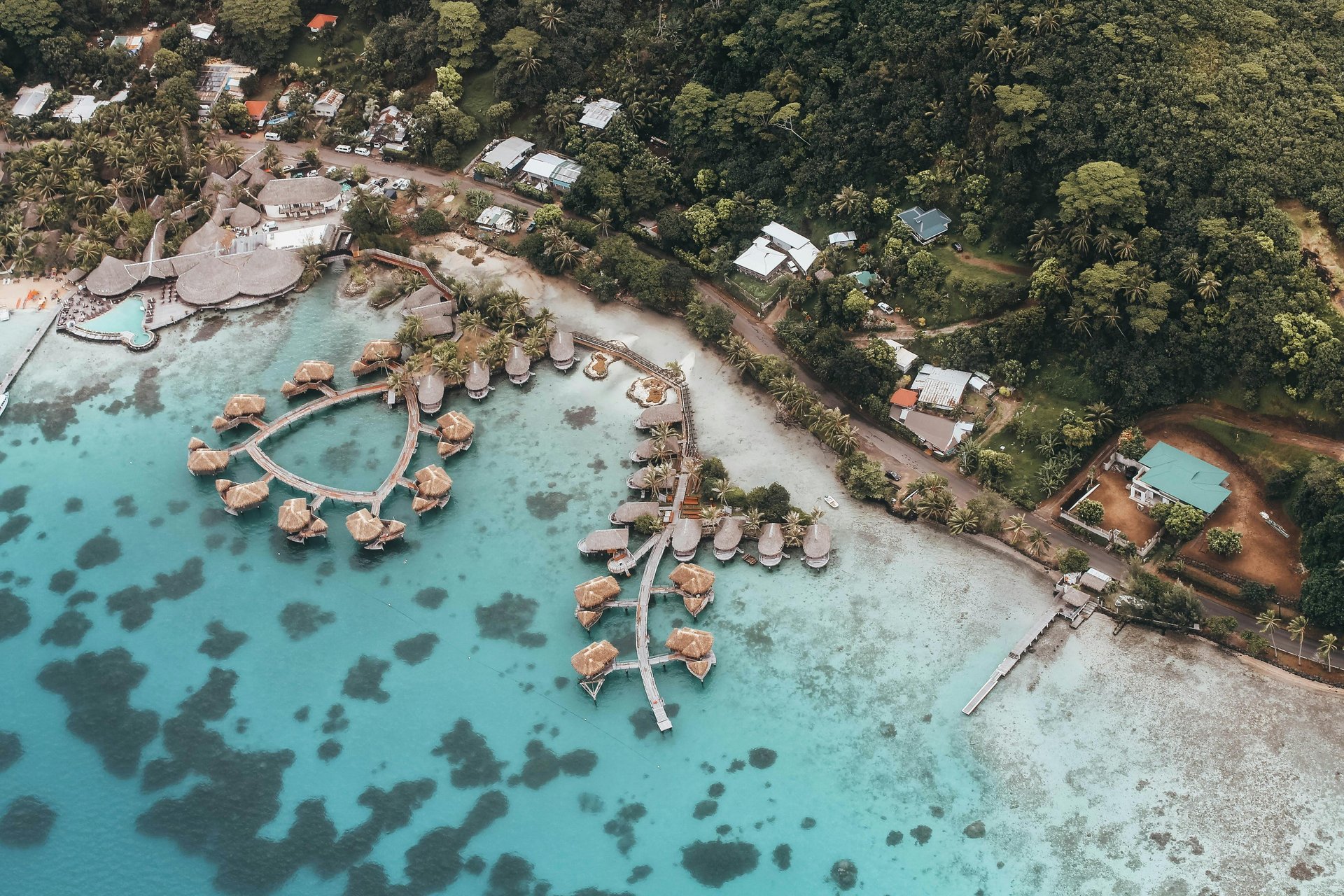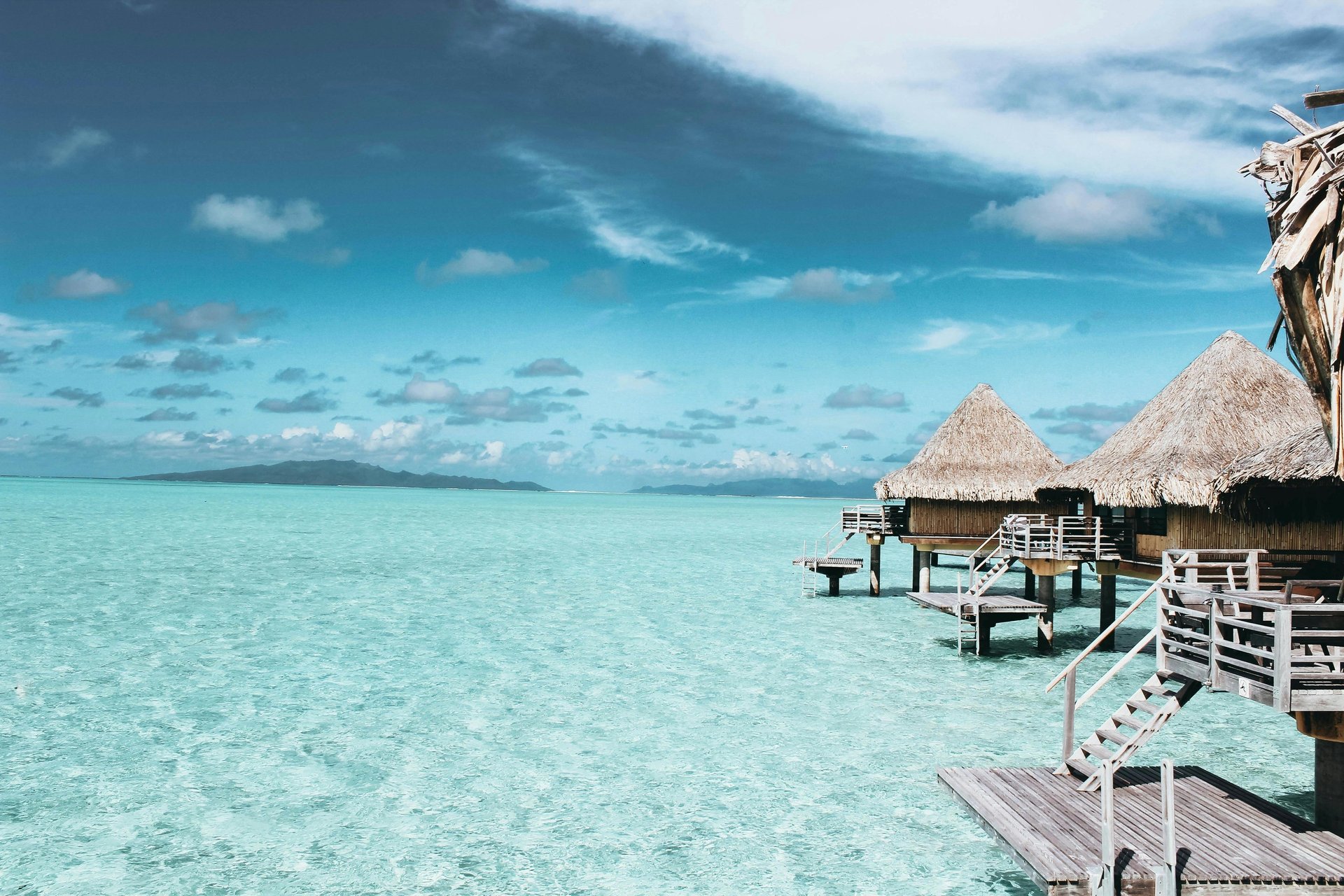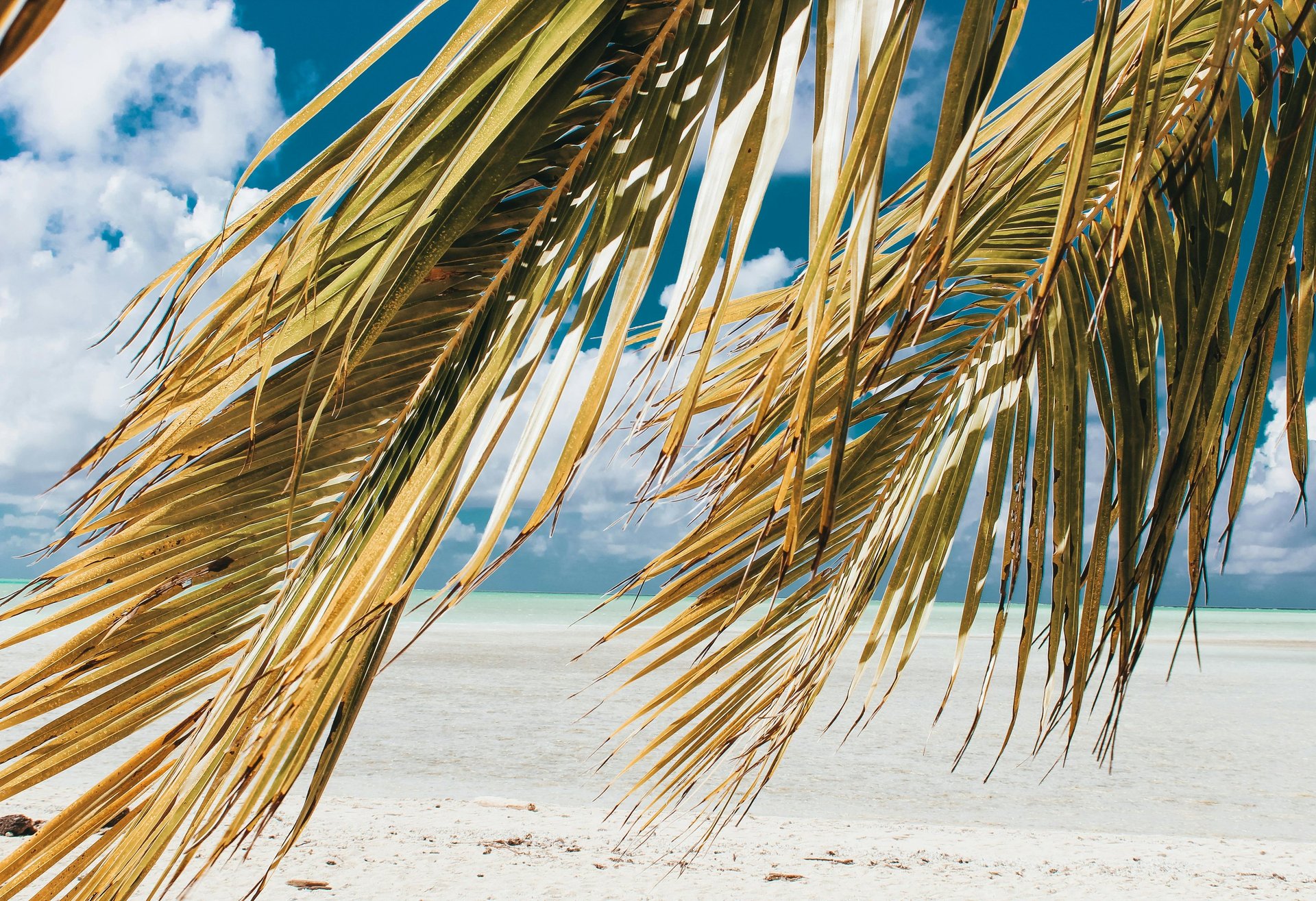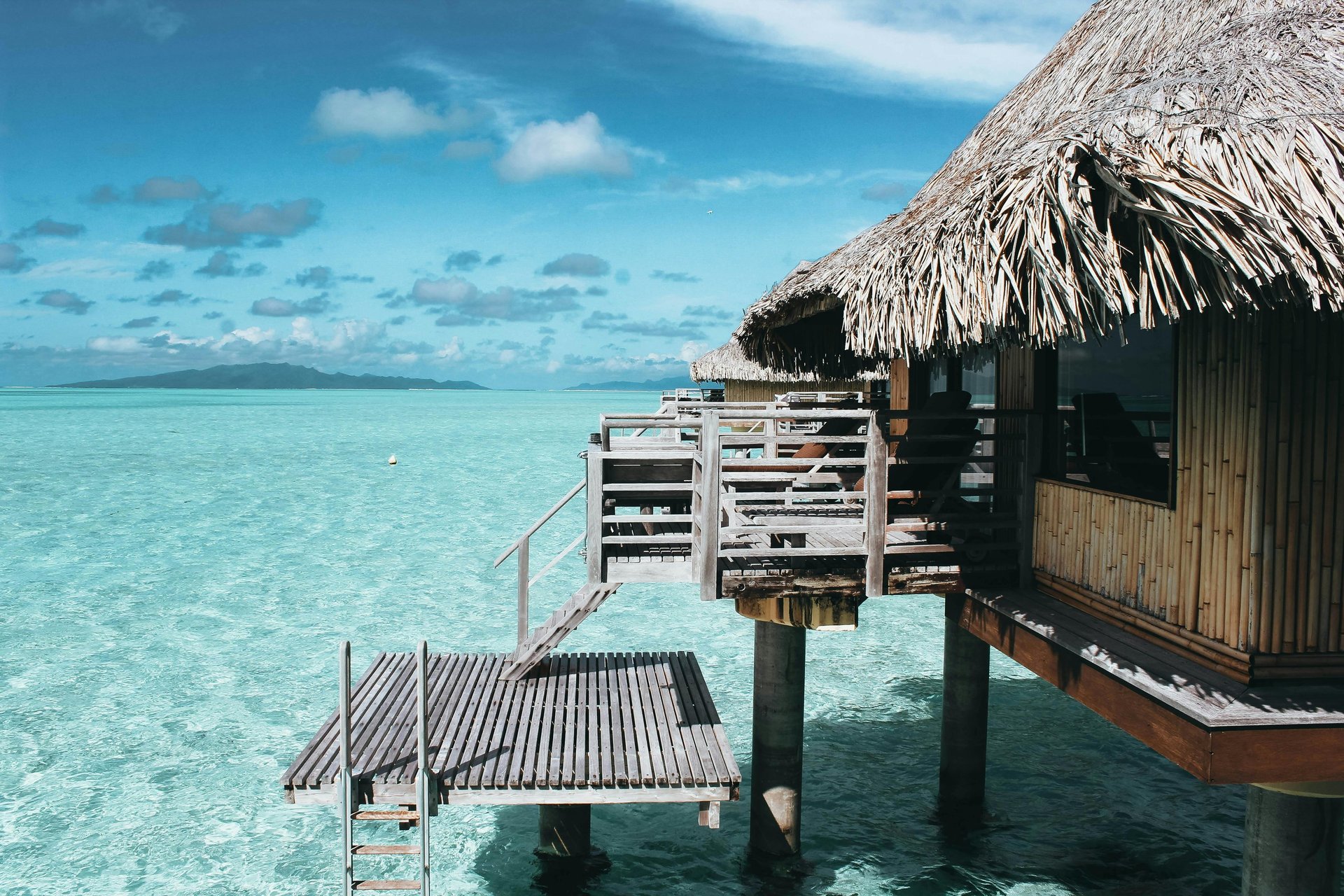Bora Bora, French Polynesia
ISLANDS OF THE WORLDOCEANIA


Bora Bora, one of the most iconic islands in the world, is a small gem located in the South Pacific Ocean. Part of French Polynesia, this island is known for its crystal-clear turquoise waters, lush greenery, and majestic Mount Otemanu rising from its center. Renowned as a honeymoon destination, Bora Bora offers more than just romantic retreats—it's a haven for adventurers, nature lovers, and those seeking serenity in one of the most beautiful tropical locations on Earth.
Getting There
Getting to Bora Bora typically involves flying into Fa’a’a International Airport in Tahiti, the main entry point to French Polynesia. From there, a short domestic flight with Air Tahiti will take you to Bora Bora's Motu Mute Airport. The breathtaking aerial views as you approach the island will set the tone for the magical experience ahead. Upon landing, visitors are greeted by boats that transport them to their hotels, often situated on motus (small islets) surrounding Bora Bora’s lagoon.
What to See and Do
Mount Otemanu: Climb or take a guided 4x4 tour around this dormant volcano for unparalleled views of the lagoon.
Snorkeling and Diving: Explore vibrant coral reefs and encounter a variety of marine life, including manta rays, sharks, and tropical fish.
Lagoon Tours: Take a boat tour of the lagoon, where you can enjoy swimming with rays and sharks, feed fish, and bask in the beauty of Bora Bora's waters.
Matira Beach: The most famous beach in Bora Bora, Matira offers soft white sand and calm, shallow waters perfect for swimming and relaxing.
Jet Skiing & Paddleboarding: Adventurous souls can engage in water sports around the lagoon, adding a touch of adrenaline to the peaceful scenery.
Cultural Sites: Visit ancient Polynesian temples (marae) and experience Bora Bora’s rich cultural heritage.
Vaitape Village: Explore the island’s main town, Vaitape, where you can shop for local crafts, pearls, and souvenirs, as well as visit local eateries to sample traditional Polynesian food.
Bora Bora Lagoonarium: A natural aquarium located in the lagoon where you can swim with sharks, rays, and various tropical fish. The Lagoonarium offers guided tours and is perfect for families.
Sunset Catamaran Cruises: Enjoy a romantic or relaxing evening cruise around the island, taking in the stunning sunset views while sipping on a cocktail or Polynesian rum.
Paragliding: For thrill-seekers, paragliding over Bora Bora offers breathtaking aerial views of the lagoon and Mount Otemanu.
Tupitipiti Point: This dive site is known for its dramatic underwater cliffs and caves, making it a great spot for experienced divers to explore coral formations and marine life.
Bora Bora Turtle Sanctuary: Located at the Le Méridien resort, the turtle sanctuary rehabilitates injured turtles. Visitors can learn about conservation efforts and even swim with the turtles in a protected environment.
Deep-Sea Fishing: Charter a boat and try your luck at deep-sea fishing, with the opportunity to catch mahi-mahi, tuna, and even marlin.
Polynesian Dance Shows: Most resorts offer traditional Polynesian dance performances (called 'Tahitian nights'), where you can experience local music, dance, and cuisine.
Glass-Bottom Boat Tours: For a more relaxed experience, glass-bottom boat tours provide a window into Bora Bora’s underwater world without needing to snorkel or dive.
Island Circle Road: Rent a scooter or bike and take a leisurely ride around Bora Bora’s 32-kilometer circle road, enjoying stunning views, small villages, and scenic stops along the way.
Private Motu Picnic: Many tour operators offer the option of a private picnic on one of Bora Bora’s small motus (islets). You can enjoy a secluded meal while surrounded by pristine waters and stunning views of the main island.
Shark and Ray Feeding Excursion: Take an exhilarating boat tour where you can hand-feed sharks and rays in the shallow lagoon waters.
Kayaking or Canoeing: Rent a kayak or outrigger canoe and paddle through the calm lagoon waters, where you can explore hidden coves and secluded beaches.
When to Visit
The best time to visit Bora Bora is during the dry season, from May to October, when the weather is cooler and rainfall is minimal. Temperatures are pleasant, ranging from 25°C to 30°C (77°F to 86°F). November through April is the rainy season, marked by higher humidity, frequent showers, and the possibility of tropical storms, but it also means fewer crowds and better rates.
Where to Stay: Which Parts of the Island?
Bora Bora offers a variety of accommodations, from ultra-luxurious overwater bungalows to more modest guesthouses.
Motu Piti Aau: Home to some of the most luxurious resorts like the St. Regis and Four Seasons, this is ideal for those seeking secluded, high-end experiences.
Matira Point: Located on the main island, this area offers access to the famous Matira Beach and a range of accommodations from luxury resorts to boutique hotels.
Motu Toopua: With stunning views of Mount Otemanu, this is a great option for those who want the perfect mix of exclusivity and easy access to the lagoon.
Sustainability and Ecotourism
Bora Bora has increasingly embraced sustainability and eco-friendly tourism practices. Resorts have adopted energy-saving initiatives, use desalination plants to provide fresh water, and offer eco-friendly tours that minimize environmental impact. Visitors can participate in coral reef restoration projects and eco-focused excursions that educate about preserving marine biodiversity.
Cuisine
Bora Bora’s cuisine reflects its Polynesian roots with a blend of French influences. Visitors can enjoy:
Poisson Cru: A traditional dish made with raw fish marinated in coconut milk and lime juice.
Grilled Seafood: Freshly caught fish, including mahi-mahi and tuna, grilled to perfection.
Tropical Fruits: Savor the sweetness of papayas, pineapples, and mangoes, all locally sourced.
French Delicacies: Indulge in French pastries and gourmet meals at high-end resorts.
Practical Travel Tips
Currency: The local currency is the French Pacific Franc (XPF). Credit cards are widely accepted, but it’s a good idea to carry some cash for smaller purchases, especially in local markets.
Language: French and Tahitian are the official languages, though English is widely spoken in tourist areas.
Transportation: The best way to get around Bora Bora is by bicycle or on foot. Boat shuttles also transport guests between resorts and the main island. Renting a car or scooter is an option for exploring at your own pace.
Tipping: Tipping is not customary in French Polynesia, but it is appreciated for exceptional service.
Safety: Bora Bora is generally very safe for travelers. Basic precautions like keeping valuables secure and staying hydrated in the tropical climate are recommended.
Packing Essentials:
Light, breathable clothing
Reef-safe sunscreen (to protect the coral reefs)
Swimsuits and beachwear
Water shoes for navigating rocky beaches and coral
Insect repellent, especially during the rainy season
Culture and Etiquette: Polynesians are known for their warmth and hospitality. Respect for local customs, such as modest dress when visiting villages or religious sites, is appreciated. A simple greeting of "Ia Orana" (hello) will go a long way.
Electricity: Bora Bora uses European-style two-pin plugs (230V). Make sure to bring an adapter if needed.
Connectivity: Wi-Fi is available in most hotels and resorts, though it may be slower on some parts of the island. SIM cards with local plans can be purchased if you need more reliable mobile data.
Driving Tips: Traffic on the main island is light, and driving is on the right side of the road. Be cautious of narrow roads, and allow plenty of time to enjoy the island’s slow-paced lifestyle.
Bora Bora is a dream destination, offering unparalleled natural beauty, luxurious accommodations, and rich cultural experiences. Whether you’re seeking relaxation, adventure, or a mix of both, Bora Bora delivers an unforgettable island escape. With a growing focus on sustainability, visitors can enjoy the island’s stunning landscape while contributing to its preservation for future generations.
